We are now on our third generation of commercial DSLR’s dedicated to astrophotography, and it just keeps getting better.
A perk of having a job where you write camera control software is that you have access to a lot of cameras. Most software development happens indoors with the camera on the desk next to the computer, but there is always the time when I get to take the camera out into the field to play with it — er, I mean, "validate the software code under real operating conditions." Yes, yes, that’s what I mean!
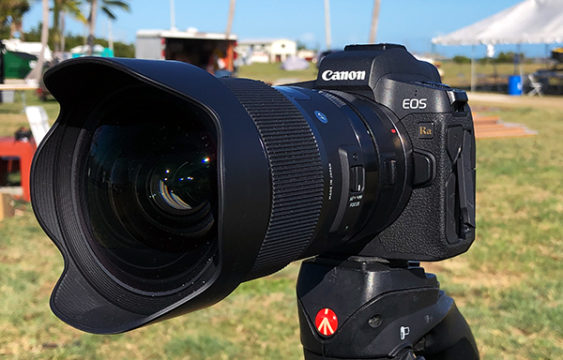
Richard S. Wright Jr.
Canon recently released new mirrorless cameras and also updated their cameras' RAW file format. The older code I wrote for the last generation cameras doesn't work with the new files, so I found myself in need of a newer Canon model for development purposes. The company's developer support team arranged to send me an EOS R so I could quickly get to the bottom of the problems. I liked it, and so I decided a better field test would be to use the EOS Ra during my annual trip to the Winter Star Party in the Florida Keys to "validate the software code." (Read Alan Dyer's review of the EOS Ra in the April issue of Sky & Telescope).
It's been awhile since I've shot with a modified DSLR, and I was looking forward to seeing how things have improved with the latest models. I’ve written about modified DSLRs in the past, and I have a good bit of experience with them going all the way back to a modified Canon T1i. That old camera was pretty noisy, but it sure did deliver better results on emission targets and Milky Way images after its surgery.
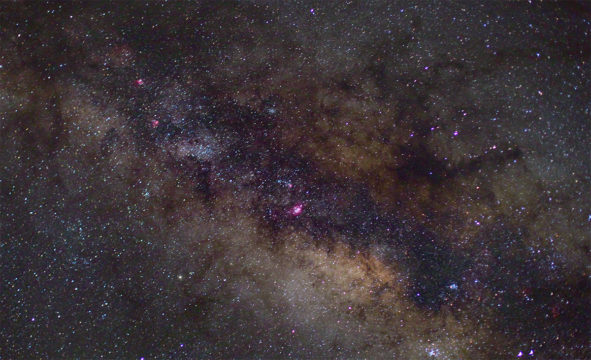
Richard S. Wright Jr.
Over the subsequent years, I've had the opportunity to use the Canon 60Da, the Nikon D810a, and I still have a full spectrum Canon T3i that I still occasionally use. I've only missed using the Canon 20Da, the very first astronomically specialized DSLR on the market.
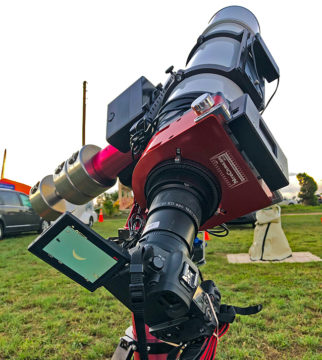
Richard S. Wright Jr.
Daytime Photography
When you modify an off-the-shelf DSLR, using it for normal daytime photography requires some extra effort as I mentioned in my previous blog on this topic. Commercial offerings from Canon or Nikon, however, provide a built-in white balance mode to make the cameras useful for more than just astrophotography. I found the second generation of Canon astrocameras, the 60Da, to be much better than my own modified cameras of course. But it wasn't quite up to par if I just wanted to be lazy and shoot in JPEG format, where the camera makes several processing decisions, particularly in color balance. I'm not an expert, but all of my daylight JPEGs took some extra work to look natural.
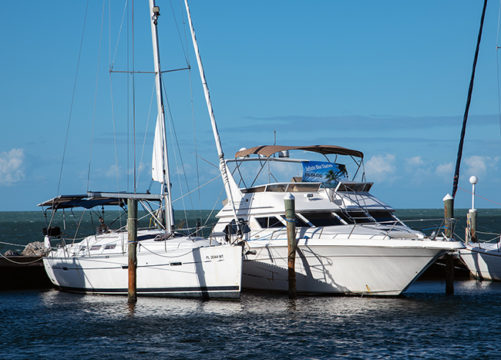
Richard S. Wright Jr.
In contrast, both the Nikon D810a and the new Canon EOS Ra, which represent the latest and greatest in this arena, shoot excellent daytime photos that don't require any additional color balance adjustments. Again, I'm no expert in daytime photography, and both Nikon and Canon seem squeamish about making the claim that their astro-cameras are "just as good" as their standard models for daylight use. If you shoot in RAW format, you have that little extra insurance if you need it. But I've reached the time where I wouldn't think twice about using a modified DSLR for birding, sporting events, etc. This really makes these cameras far more versatile than ever before.
Nighttime Photography
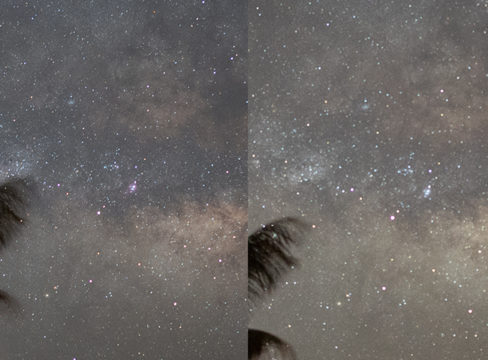
Richard S. Wright Jr.
For nightscape photography, using a modified camera doesn't produce dramatic improvements, but often it’s the small details that really make a difference. For example, shooting the Milky Way really brings out the reddish emission nebulae that are nearly invisible in unmodified camera images. This sprinkling of red highlights adds a lot to any nightscape that includes the Milky Way, and even the colors of the galaxy's central bulge seem a tad richer even before I start any processing.
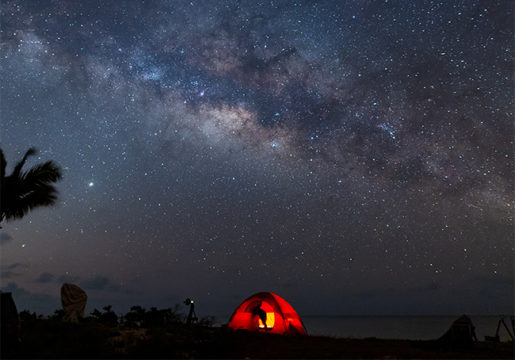
Richard S. Wright Jr.
On a telescope pointed at an emission target, the difference is dramatic. Compare the two (raw, uncalibrated) 30-second shots of the Zeta Orionis region that includes the Horesead and Flame Nebulae. You can still just make out the flowing red nebulosity behind the horsehead silhouette, but its signal is very weak. The EOS Ra version really brings out these regions of hydrogen compared to the unmodified R version. The final stacked version (recorded through a 150-mm refractor at f/7 for an hour and 15 minutes) is quite a satisfactory result. Fifteen years ago, I’d never have gotten results this good with my first modified DSLR, even with longer exposures.
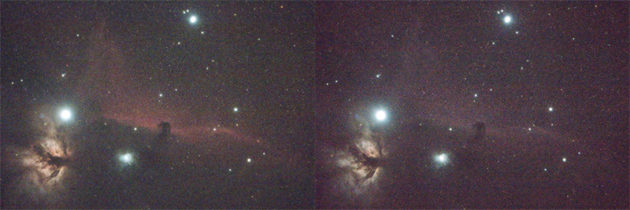
Richard S. Wright Jr.
Change of the Guard, Changing Rules
DSLR and CMOS technology is rapidly evolving (see my upcoming article “Changing of the Guard” in the May issue of Sky & Telescope). So old rules and advice are quickly becoming obsolete. For example, I previously had to experiment to find the ISO sweet spot with my old modified cameras where the ISO was pushing signal above the read and fixed pattern noise in low light circumstances. I outlined this technique here back in September, 2018. My results repeating this experiment with the Ra were quite different.
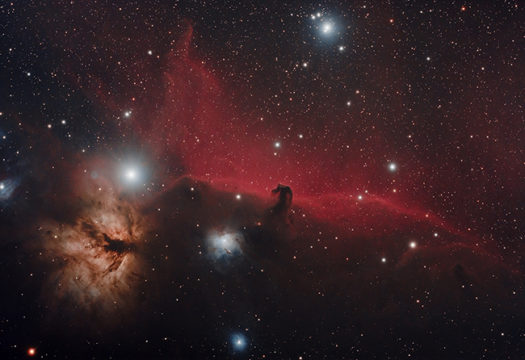
Richard S. Wright Jr.
Shooting at ISO 100 and ISO 3200 provided comparable noise levels when the dimmer image was stretched to match the brighter one. Many of these newer DSLR's are what we call "ISO invariant" and we can optimize for greater dynamic range now without sacrificing noise performance. Lower noise in exposures is nearly as important as the extra red response. This is exciting, so it might well be time to upgrade my stock DSLR to take advantage of these improvements. The rules are changing, and it's for the better.
 5
5









Comments
SadlierArt
March 16, 2020 at 11:23 am
Olympus has introduced Starry Sky AF Mode with the E-M1 Mark III. The camera can focus on stars in this mode. In this mode there are two possible settings: Speed Priority setting works in tandem with the E-M1 Mark III’s built-in image stabilization system (7 Shutter speed stops) so you can shoot night skies handheld; Accuracy Priority setting lets you use a tripod and a telephoto lens to pinpoint specific stars.
You must be logged in to post a comment.
Richard S. Wright Jr.Post Author
March 16, 2020 at 12:27 pm
Cool. I didn't want to repeat our existing review, but yeah with the EOS Ra, I can actually see the Milky Way through the digital view finder. It's incredible how far we have come.
You must be logged in to post a comment.
Craig-Bobchin
March 17, 2020 at 8:49 pm
I don't know if you've reviewed the Pentax K-1, but I've found it great for astrophotography. In addition to it's very good red response for a stock unmodded camera, it has a unique feature called Astrotracer that makes it perfect for astroimaging.
Astrotracer (which is also on several ASP-C format cameras by Pentax) will move the sensor to track the stars for up to five minutes (variable based on a number of factors) on a regular tripod, no need for a tracking mount. I've used it to shoot single milkyway nightscapes 3 minutes in duration.
I think it and other similar Pentax deserve a place on this list.
You must be logged in to post a comment.
Howard Ritter
March 21, 2020 at 11:27 am
Thanks for the article, Richard, as well as your past and future ones in S&T. I have a Nikon D810A that I’m just starting to use for astroimaging.
Here you’ve addressed the concept of “ISO invariance“. Can you comment on why there should be any difference in the first place between the end results that can be gotten, with post-processing, from low and from high ISO settings on the camera? A camera’s sensor will collect the same number of photons in each well regardless of what ISO the camera is set to. The camera simply processes the information differently depending on how the ISO is set. Why should there be a difference in the final result between the camera amplifying the electron numbers to high ISO before writing the image file, and on the other hand, the astroimager processing the same information, interactively, from the low-ISO image file at the computer? If anything, it seems to me that the latter process would be expected to give more satisfactory results. Does it have to do with on-chip amplification introducing less noise to be amplified along with the signal in post-processing?
You must be logged in to post a comment.
John Schnupp
March 21, 2020 at 3:03 pm
Astrophotography is a niche market that used to be dominated by Canon but that has/is changing rapidly. There have been some other good DSLRs mention, yet another is Sony (the actual maker of many imaging sensors). The truth is, that all of the most recent DSLRs outperform older generations. The biggest issue with some of the the brands/models is the lack of camera control software, but even that situation is rapidly changing.
You must be logged in to post a comment.
You must be logged in to post a comment.